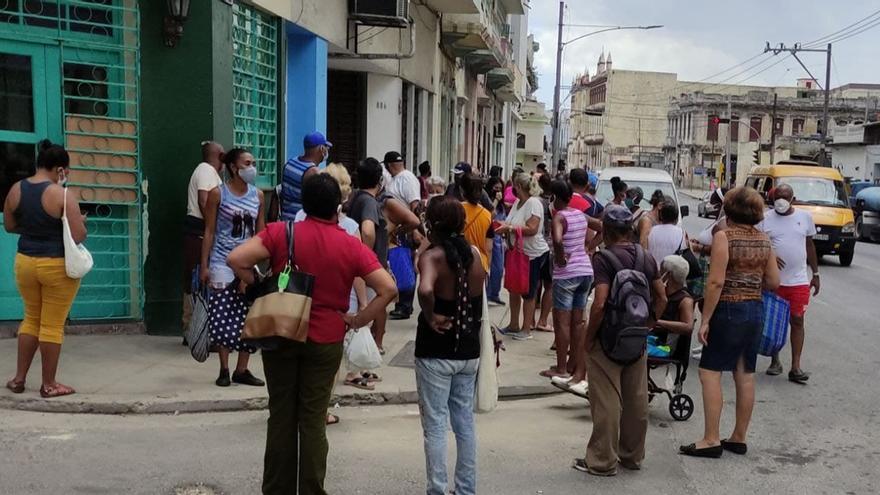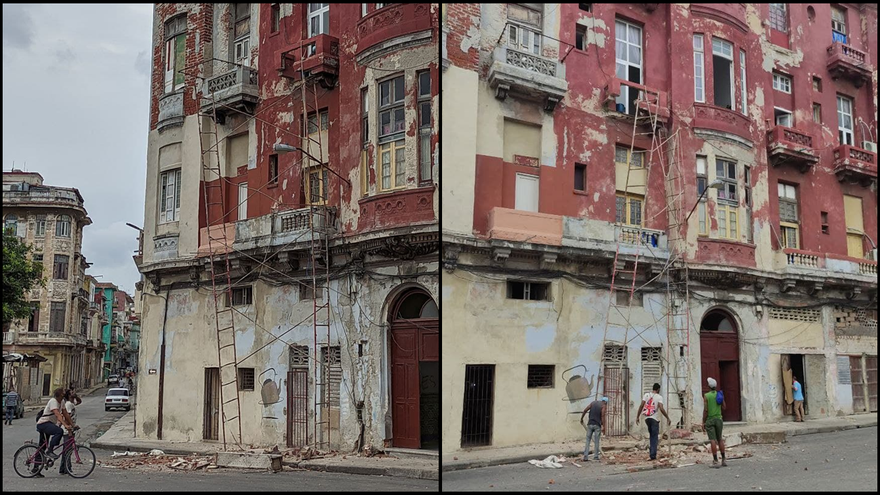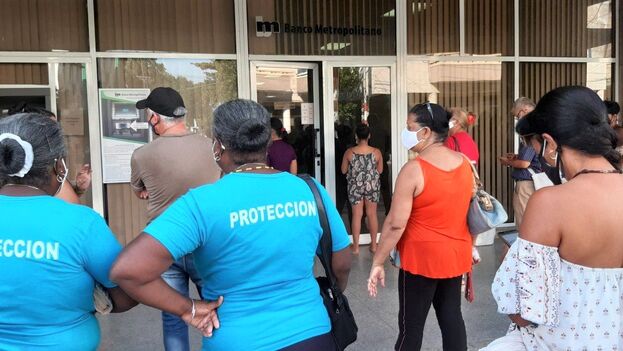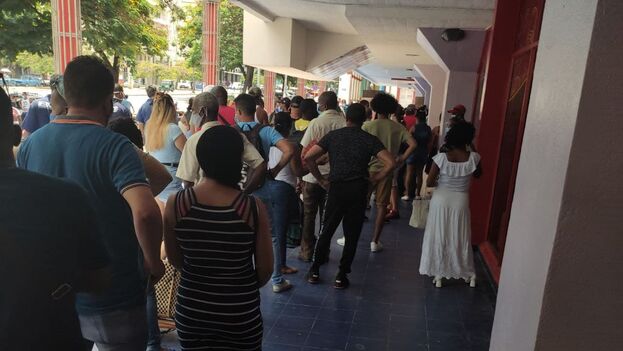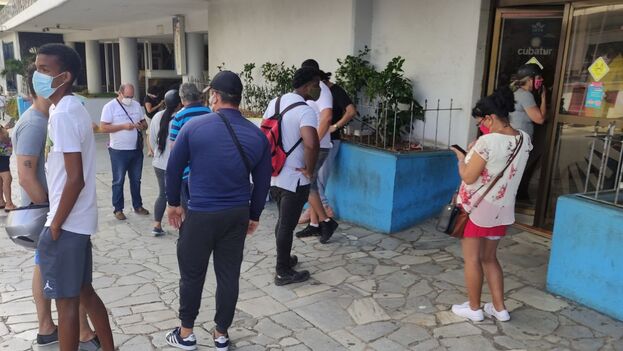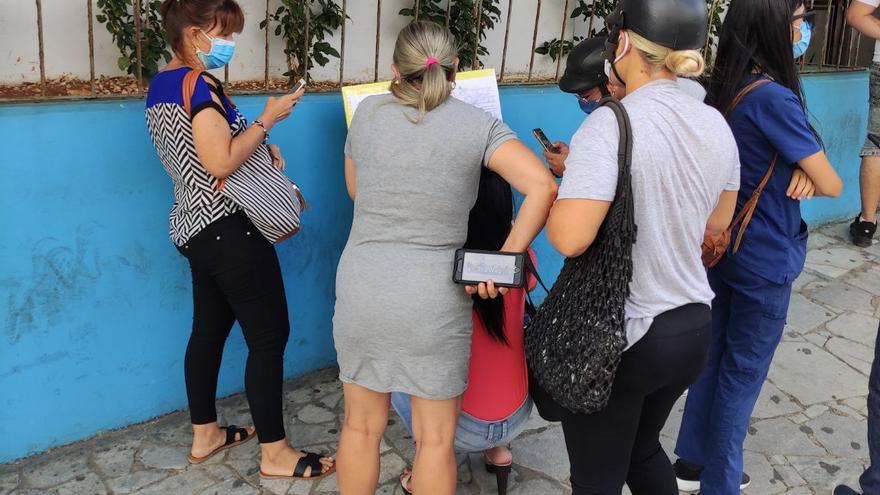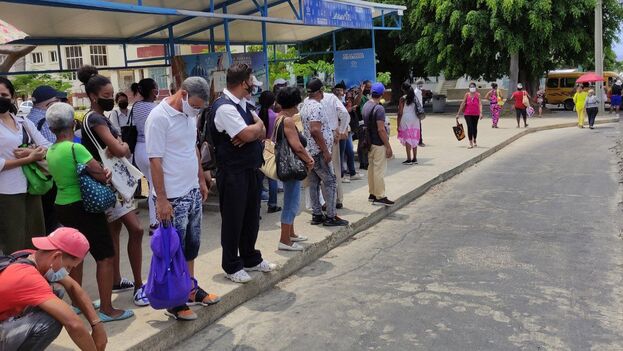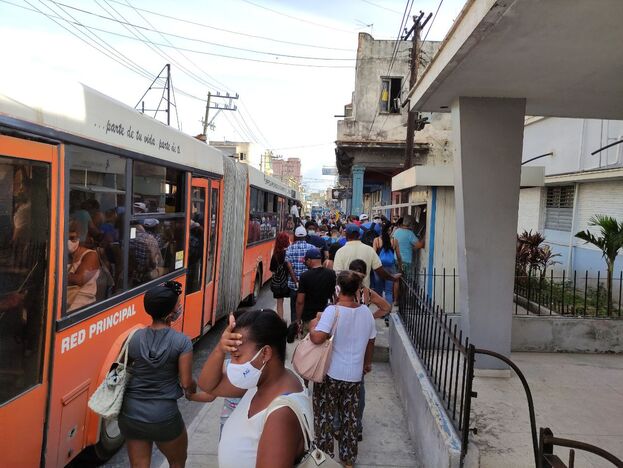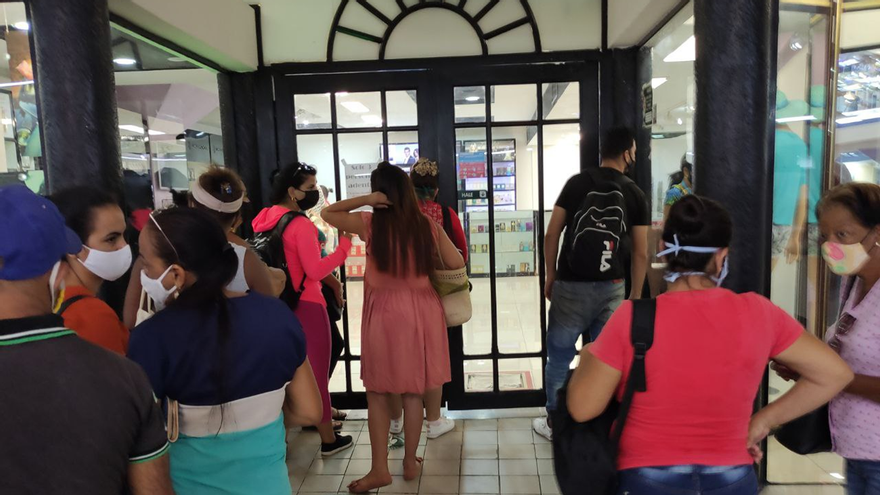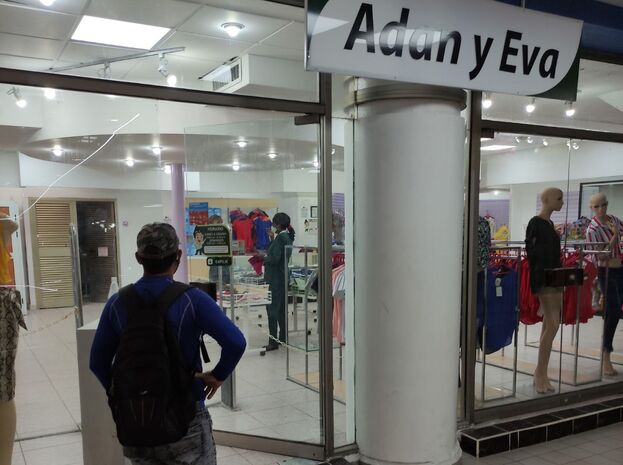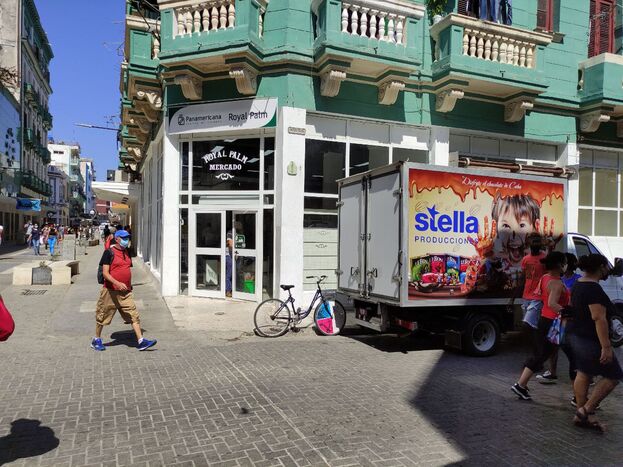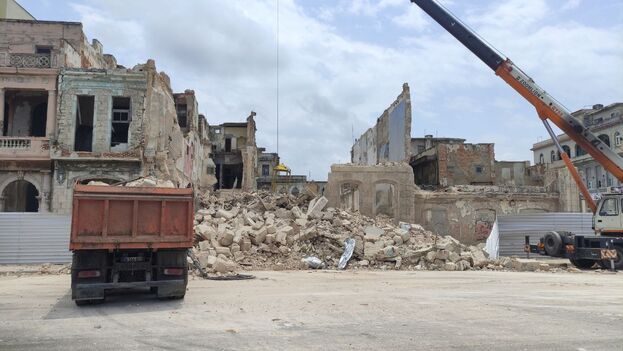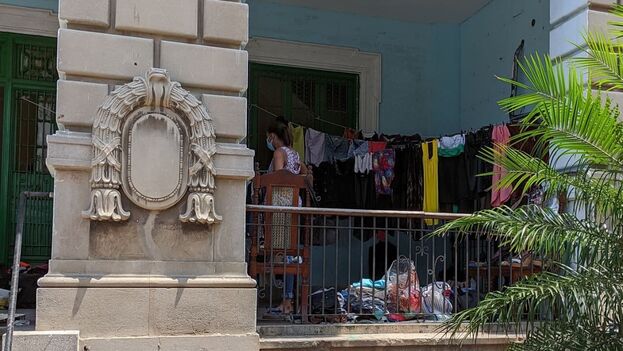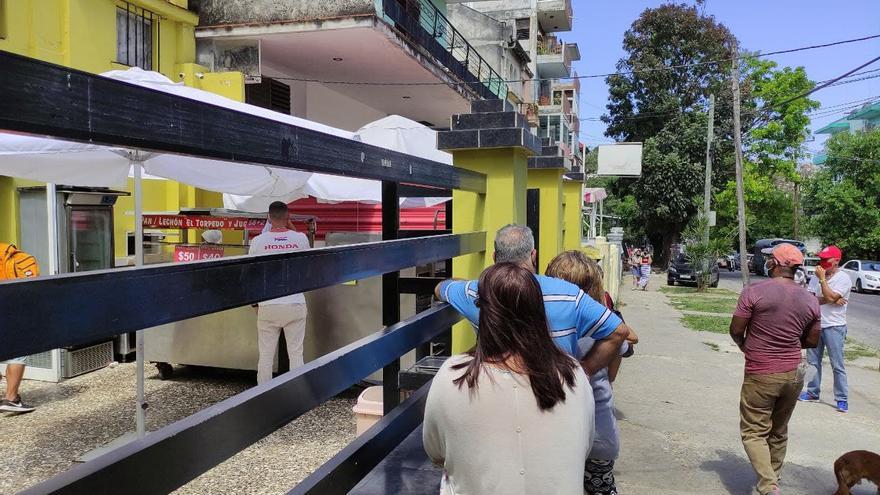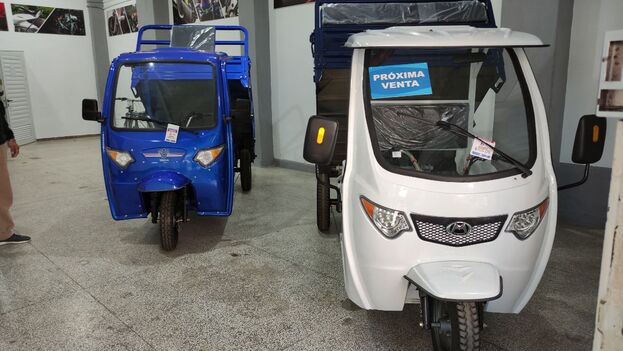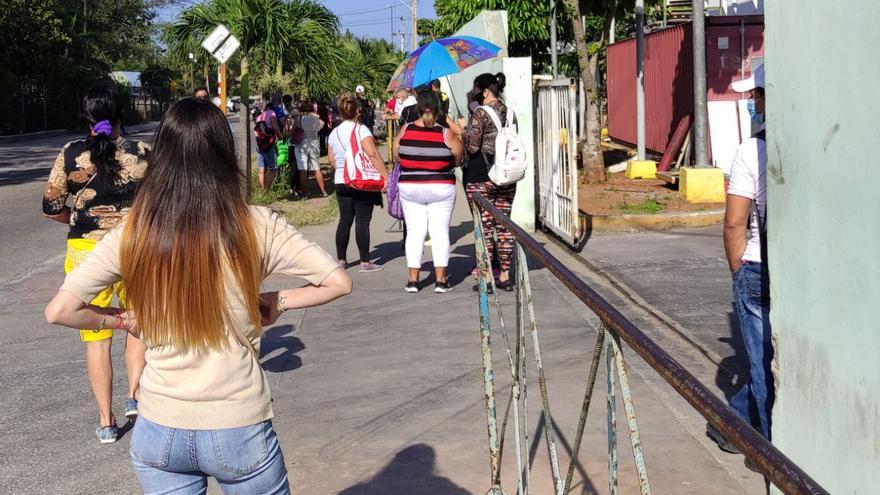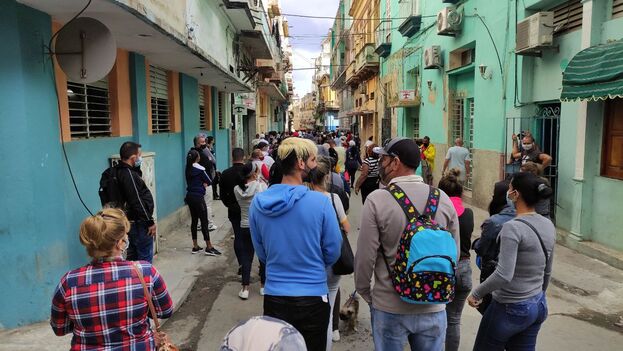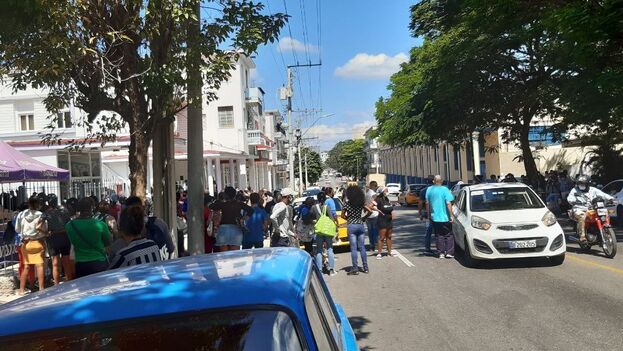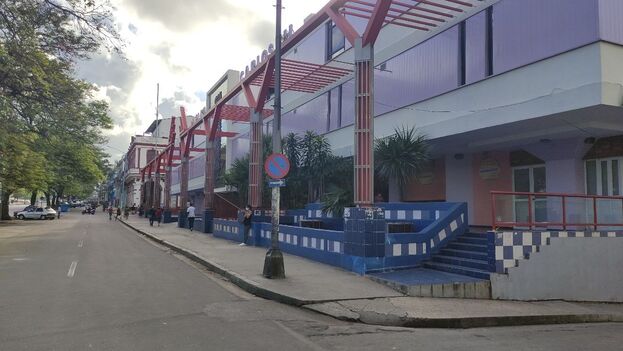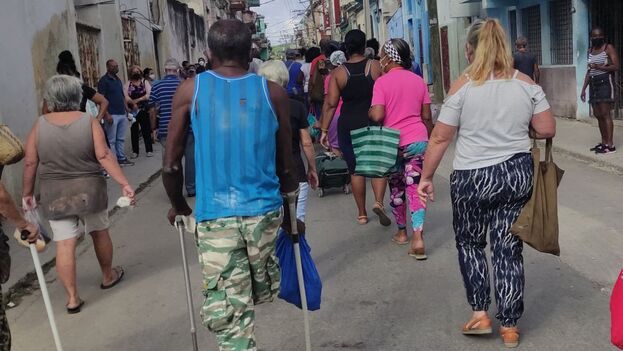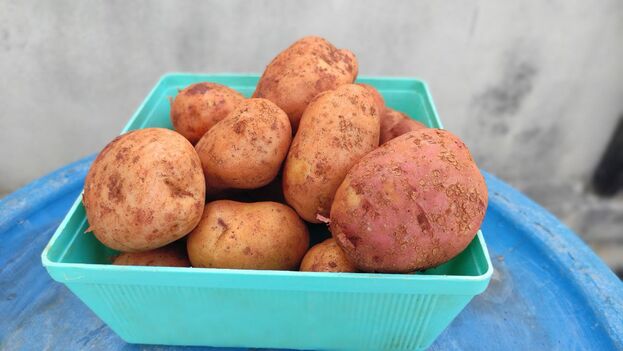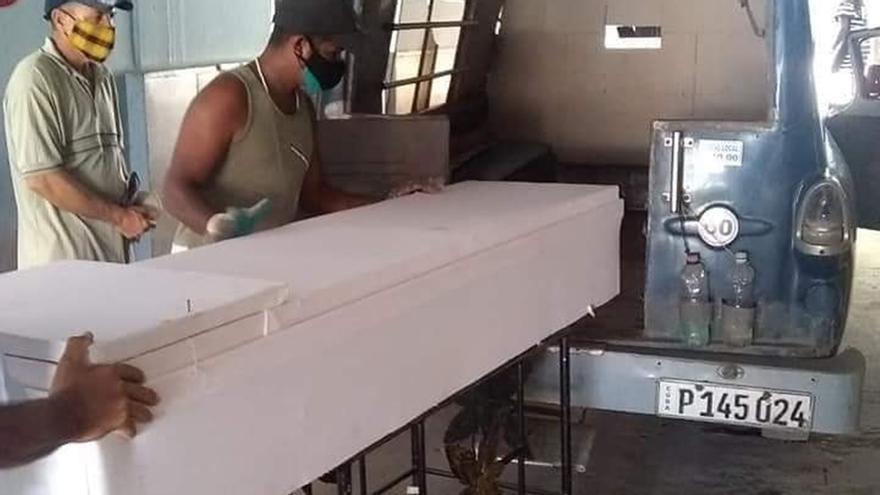
![]() 14ymedio, Juan Diego Rodríguez/ Natalia López Moya, Havana, 8 August 2021 — An image invades social networks since the unstoppable increase in deaths from Covid: that of white coffins, a very unusual color in Cuba, where gray and black reigned until now at funerals. “There is no black fabric,” they tell 14ymedio employees of funeral homes in various provinces.
14ymedio, Juan Diego Rodríguez/ Natalia López Moya, Havana, 8 August 2021 — An image invades social networks since the unstoppable increase in deaths from Covid: that of white coffins, a very unusual color in Cuba, where gray and black reigned until now at funerals. “There is no black fabric,” they tell 14ymedio employees of funeral homes in various provinces.
The pandemic has forced the use of different materials due to the increase in deaths. The State Communal Services company must search all over the country to obtain the wood, the cardboard and “the cloth cover for the box,” an improvisation that causes discomfort among the families of the deceased.
“Now they are all of poor quality,” lamented a relative this Friday, who was waiting to be transferred from the La Nacional funeral home in Havana to the Colón Cemetery.
The resurgence in deaths from Covid-19 has hit especially all the supplies related to wakes and burials: coffins, wreaths, dedication ribbons, tombstones and even niches to deposit the mortal remains.
“They could hardly load the box because it seemed like it was going to fall apart,” continue reading
“My brother’s was a white coffin, something that shocked us because it was not the most common but they told us that it was the fabric they had available, it did not have any of the metallic ornaments that they used to use and as soon as they lowered it into the pit one of the corners opened up, it was a terrible image,” she adds.
“The coffins for adults, Model 900, are being lined with whatever fabric they can get, white, blue, whatever there is,” confirms to this newspaper a funeral employee of Ciego de Ávila, the province that has recently become one of the epicenters of the covid in Cuba and with the cemeteries packed daily with new burials.
This is also the case in neighboring Sancti Spíritus. “We have problems with the brads to place the lining, so the boxes are coming out with less,” acknowledges an employee of the company Producciones Varias. “The blackouts affect us a lot, you can’t use the saw to cut the slats and you have to do it with a machete,” he adds.
“If the family member brings me the fabric, I will line the box to their liking, but almost no one has time to bring anything because, between the death of the relative and the rush to bury him, there is no time for anything,” explains this worker with more than two decades of experience in the sector. “They are taken straight from the hospital to the cemetery in most cases.”
Numerous videos and photographs of very poor quality coffins arriving at cemeteries have begun to circulate in recent weeks on social media. The reports of mass graves, the bad smell around the cemeteries and the extensions of the mausoleums, have focused attention on the funeral services.
“Traditionally, here, white coffins are used only to deposit the remains of small children and people with Down syndrome,” an employee of the funeral home on Calle 37, between 60th and 62nd, in Cienfuegos explains to 14ymedio. However, the Communal Services worker does not rule out that they will soon have to resort to other tones given the rise in deaths.
But he has not only had to improvise with the colors. “I had a wreath made for my grandfather who died of a heart attack and he only had six flowers and everything else was leaves, they didn’t have a ribbon available so we had to cut some curtains to make him some pretty bows,” a young woman lamented this Sunday, at the Marcos Abreu funeral home, on Zanja Street at the corner of Belascoaín in Havana.
In the large room, that day the coffins were mixed, with some in dark cloth and another in white cloth, and all the bodies that were veiled had died of other causes, according to an employee. “In the case of burial they go in their box, but they are already going to the crematorium in bags because the demand for coffins is very high and there are no materials,” the employee admits under anonymity.
At another important funeral home in the Cuban capital, La Nacional, workers confirm that the situation is tense and the coffins they have are of very poor quality, with some lined in dark and others in white. “Those who died from covid here in Havana go in bags directly to the crematorium, they do not go in a coffin.”
“The coffin is what you see, like the flower wreaths, but there are many other problems that nobody fixes until you have to run with the procedures of a funeral,” says Mónica Estrada, sister of a deceased by a stroke in Morón. “The funeral home didn’t have any coffee to sell to the mourners.”
“There are not enough hearses a self-employed worker who lives behind the cemetery and is dedicated to making markers and placing the inscription chosen by the family, told me that he has a waiting list until September because his orders have skyrocketed and he has no material. “So we had to bury my sister without a marker or anything in place.”
“When you arrive at the cemetery it is another problem, because there are many families crying because of how quickly everything has gone and others who are going to remove the remains of a long-dead relative from their family vaults, to make room for the one who has just died,” he says. Estrada. “You have to remove one dead person to put in another because there is no space.”
Last February it was announced that the Cuban authorities were in talks with Industrias VEQ, one of the companies that manufactures the EcoAtaúd [EcoCoffin], which is produced in Mexico at a much lower price than the traditional one out of wood. The coffin is made of polyaluminum, a material that comes from the containers with a mixture of two raw materials, 70% plastic and 30% a thin layer of aluminum.
This media spoke with the company in the Mexican capital but the employee could not confirm if that contract was signed and if those coffins have arrived on the island.
____________
COLLABORATE WITH OUR WORK: The 14ymedio team is committed to practicing serious journalism that reflects Cuba’s reality in all its depth. Thank you for joining us on this long journey. We invite you to continue supporting us by becoming a member of 14ymedio now. Together we can continue transforming journalism in Cuba.

